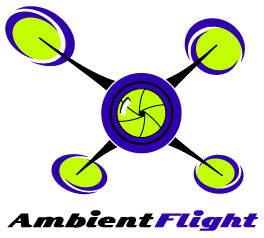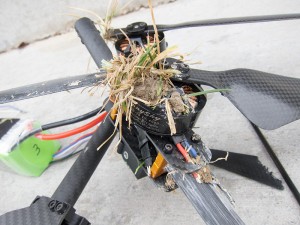

 After hours of trying to reduce vibrations in the Alien H4 680mm quadcopter drone, I’ve decided to order two new motors. I’ll be replacing the two motors on the rear of the craft. Despite all the attempts to balance the motors, especially motor #3 (left rear), I’m taking a guess that one or both of the motors are damaged from the crash, or even perhaps the first flip. The vibration is practically visible on motor #3. I can see the landing gear visibly moving. Touching or even getting close to touching arm #3 “tickles.” It is obnoxious and no wonder I can’t capture any decent video.
After hours of trying to reduce vibrations in the Alien H4 680mm quadcopter drone, I’ve decided to order two new motors. I’ll be replacing the two motors on the rear of the craft. Despite all the attempts to balance the motors, especially motor #3 (left rear), I’m taking a guess that one or both of the motors are damaged from the crash, or even perhaps the first flip. The vibration is practically visible on motor #3. I can see the landing gear visibly moving. Touching or even getting close to touching arm #3 “tickles.” It is obnoxious and no wonder I can’t capture any decent video.
Two new motors are on the way on the slow boat from China. I will balance them before installation, which I should have done before. Once the new motors are installed I’ll tear apart the old ones and check to see if the bearings or the prop posts are broken or bent. That would cause the vibration problems. If I can fax them, then I’ll have a couple of extra motors.
Winter is in full force here with plenty of snow and very cold temperatures. I’ve been working on fine tuning the settings for my large hexacopter (six propeller drone) this year, and when the snow and cold hit I saw that as an opportunity to capture some “winter” themed video and photos for my demo reel. The cold temperatures threw all sorts of monkey wrenches into that idea.
How Cold Temperatures Affect Drones
Drones are highly technical machines with motors, sensors, tight tolerances. The cold temperatures can affect the sensors such as the gyroscope and accelerometers, causing them to misbehave or produce unexpected results. This can affect the flight characteristics of the bird.
Camera gimbals, which are used to keep cameras level or smooth out motion, also have these types of sensors. Cold temperatures can cause gimbals to perform differently than they would in warmer temperatures. One way to try and get around these issues is to calibrate the sensors in the same cold temperatures, not in the warmth of the shop.
Batteries can be greatly affected by the cold. There’s a reason why Sears advertised that their Die Hard car batteries performed in extreme winter conditions, because cold can reduce battery performance. Cold temperatures typically translate to shorter flight times. This is very important to keep in mind for those who time flights rather than keeping an eye on battery voltage. I’ve found that in very cold temperatures the voltage drops quickly at first, but does level out a bit toward the end of the flight.
Brittle parts can be a problem. If there are parts of the drone which need to be tightened before flight, doing so in the cold could result in easy breakage. For instance, the arms on my hexacopter are foldable. I make sure they’re tightened down in the warmth of my house and that I don’t tighten them down outside in the cold. Hard landings in the cold with more brittle parts could mean more damage to the bird in a crash.
Lastly, the pilot can be greatly affected by the cold. While flying yesterday in 12 degree fahrenheit temperatures, my bare fingers were numb about five minutes into the first battery set. Numb fingers can be a very bad thing when the feel of the controls on the remote is so important. With a numb thumb I could easily bump the throttle down and not feel that I’ve done so. A bad bump could mean reducing thrust enough that the bird falls from the sky, or perhaps a bump up in throttle might turn the bird into a kamikaze.
Air Density
Cold temperatures mean higher air density. This can change the flight characteristics of the drone. With higher air density the same propellor RPMs produces more lift. The motors will not have to work as hard, which could be a positive or a negative depending on the setup. Usually it is a positive though, producing slightly smoother flight and working the setup a little less.